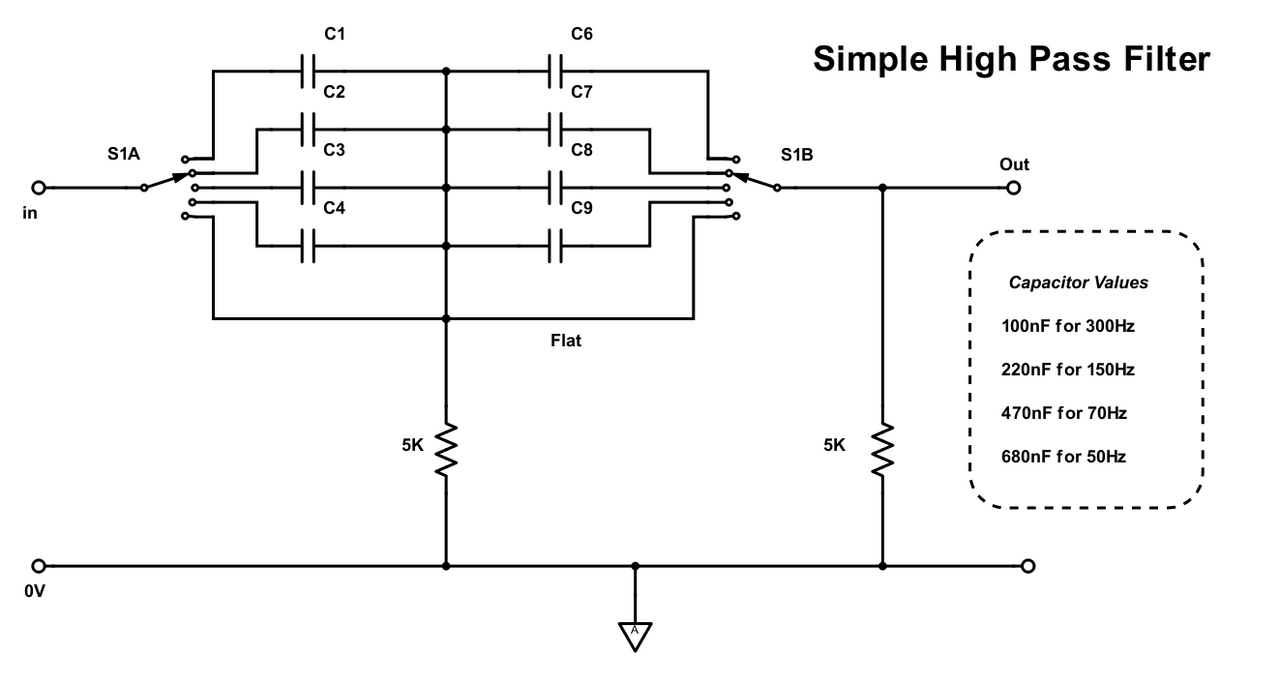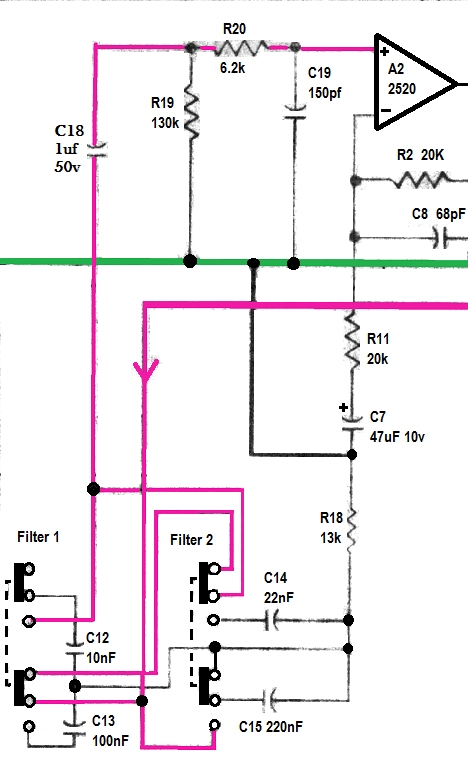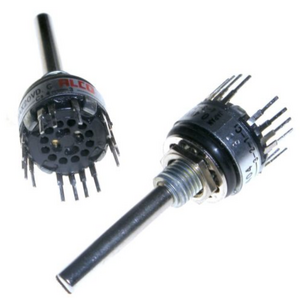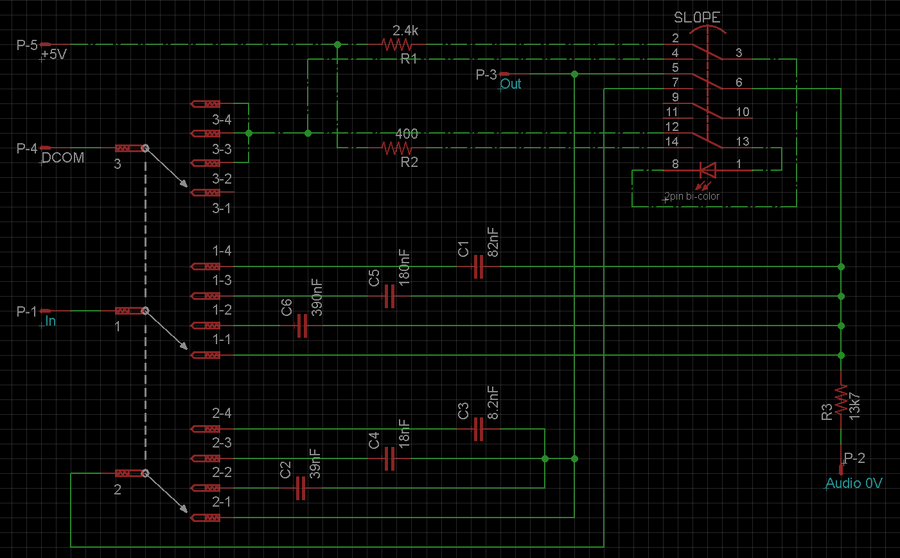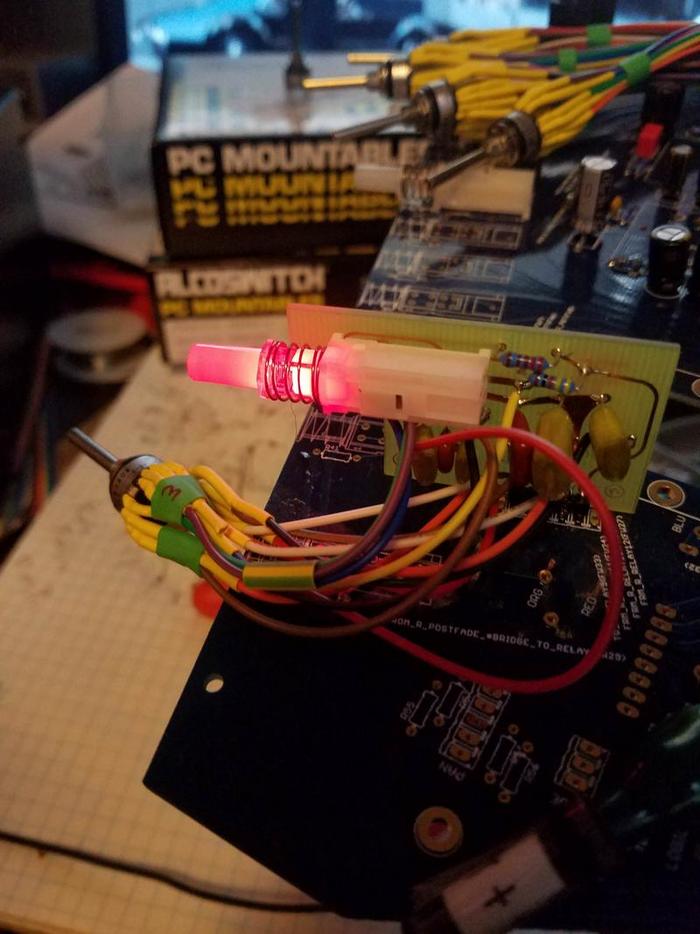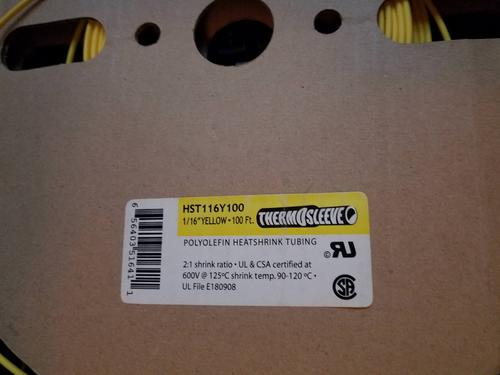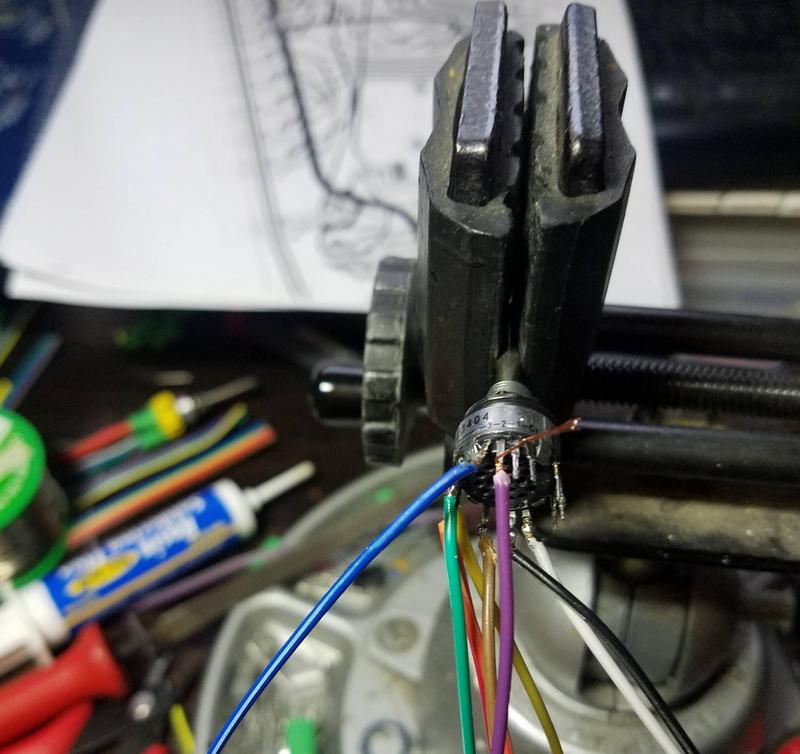boji
Well-known member
I can't seem to get the right figures when I try to calculate the cutoff frequency of caps...
By nature of the circuit I reviewed, Jumping pins 2+3 ought to give -6db, jumping 1+2, roughly -12db.
My limited understanding is putting caps in parallel raises the overall value (lowering the cutoff), but in this circuit the caps go in series?!?
I must either be missing something about how to calculate slope or more likely I have made a mistake in making or interpreting the circuit...
Edit: I think the second resistor (to complete the 2nd order filter) might be in front of the OpAmp, as this circuit generally seems the same as the API 536 HPF, yet with different cap values. If this is true, then my -6db/-12db annotation is reversed (Edit: Fixed for posterity's sake)...
Thanks for taking a look. And thanks for any suggestions!
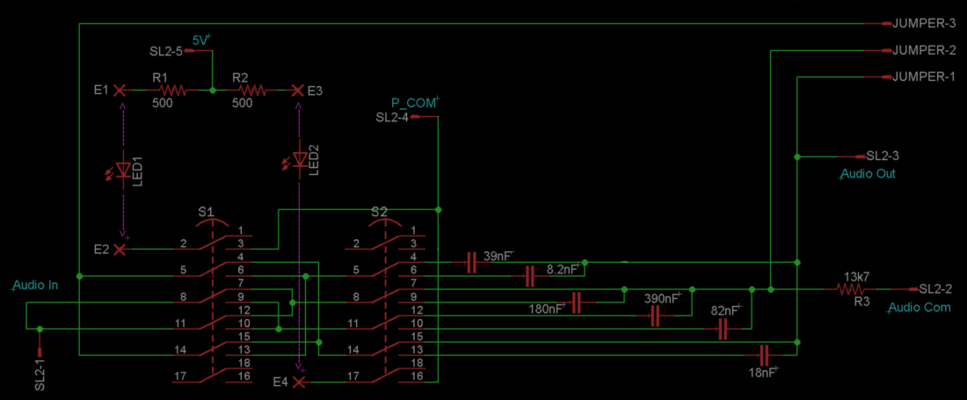
Expected frequencies:
~40Hz 390nF -6dB rolloff
~40Hz 390nF + 39nF -12dB rolloff
~80Hz 180nF -6dB
~80Hz 180nf + 18nf -12dB
~120Hz 82nf -6dB
~120Hz 82nf + 8.2nf -12dB
By nature of the circuit I reviewed, Jumping pins 2+3 ought to give -6db, jumping 1+2, roughly -12db.
My limited understanding is putting caps in parallel raises the overall value (lowering the cutoff), but in this circuit the caps go in series?!?
I must either be missing something about how to calculate slope or more likely I have made a mistake in making or interpreting the circuit...
Edit: I think the second resistor (to complete the 2nd order filter) might be in front of the OpAmp, as this circuit generally seems the same as the API 536 HPF, yet with different cap values. If this is true, then my -6db/-12db annotation is reversed (Edit: Fixed for posterity's sake)...
Thanks for taking a look. And thanks for any suggestions!

Expected frequencies:
~40Hz 390nF -6dB rolloff
~40Hz 390nF + 39nF -12dB rolloff
~80Hz 180nF -6dB
~80Hz 180nf + 18nf -12dB
~120Hz 82nf -6dB
~120Hz 82nf + 8.2nf -12dB



